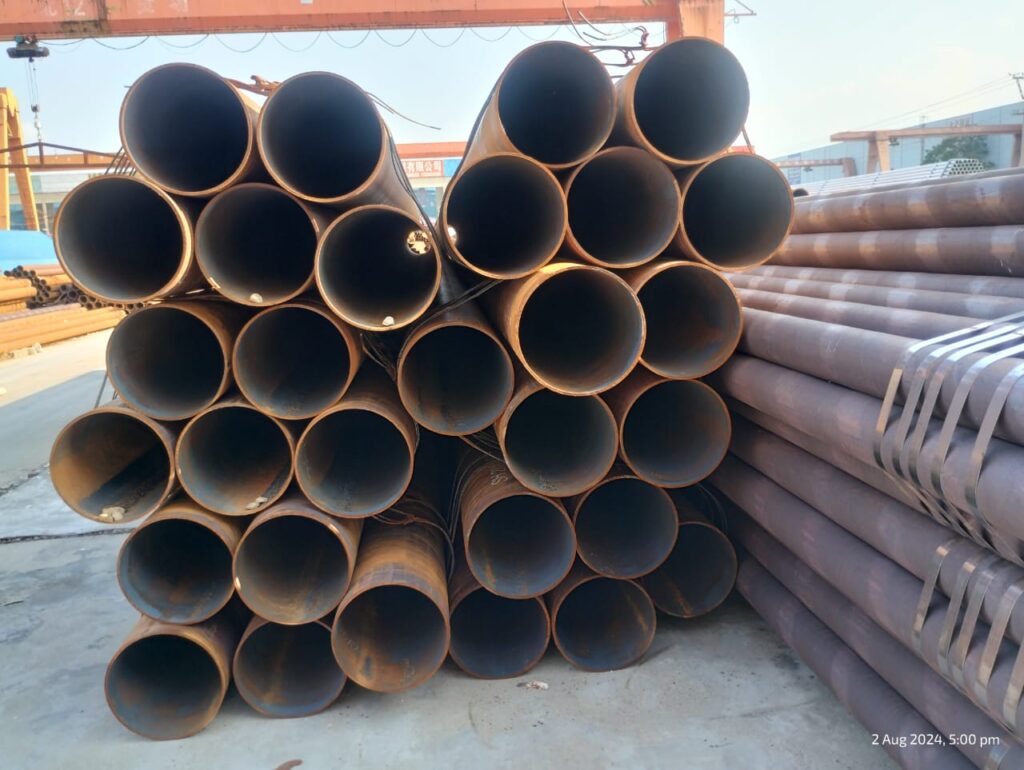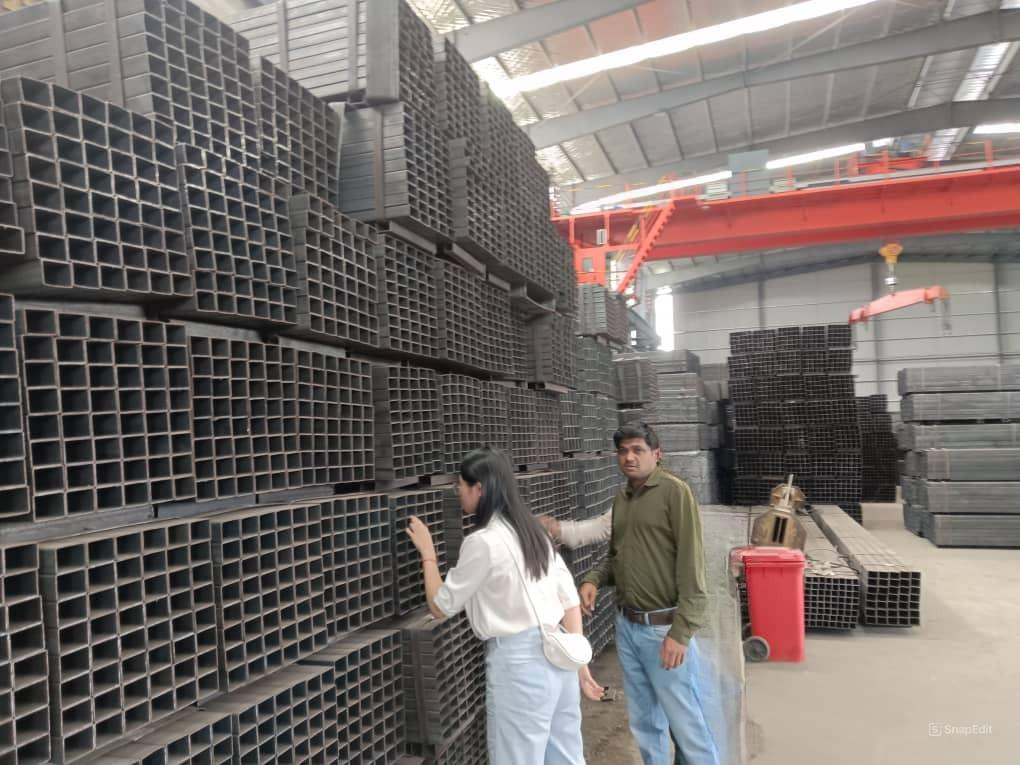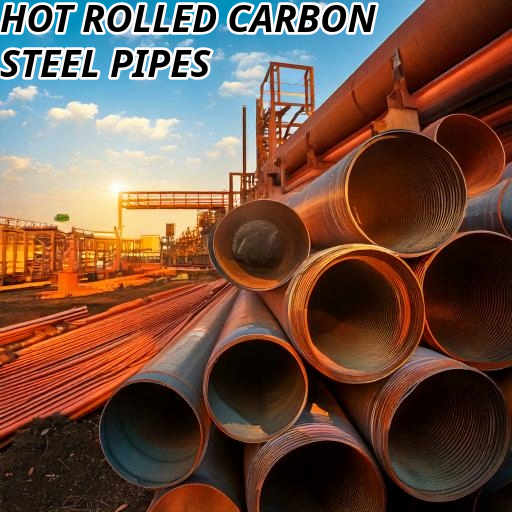Introduction to Hot Rolled Carbon Steel Pipe
Hot rolled carbon steel pipes are versatile, tough, and durable materials with various industrial applications and construction in several instances. It’s the product from the hot-rolling process of carbon steel in which the material is heated up to high temperatures before being molded in a desired form and size. In this manner, the finishing is not smooth on these pipes, while the strength and toughness of such materials significantly rises through this procedure; therefore, the product becomes absolutely perfect for various applications involving heavy duties.
Hot rolled carbon steel pipes are manufactured from a combination of carbon and iron that gives them high strength and long-lasting performance. The manufacturing process is hot-rolled, therefore the pipes are stress-free and uniform. Similarly, the pipes handle extreme temperatures and pressures easily; hence, they are suitable for demanding environments such as oil and gas, power plants, and infrastructure projects.
The cost-effectiveness of hot rolled carbon steel pipes makes them widely preferred in various industries. They are quite flexible and customizable, hence coming in different sizes and specifications. They have moderate resistance to corrosion but can be improved with protective coatings for increased life span and durability.
Thus, its importance finds place in the making of pipelines, structural frameworks, and components of machines, including water transportation systems. These features have given the metal very great standing within the construction and manufacturing sectors. Summing up all features: being strong but very inexpensive, easily adaptable in design; all these have combined to make hot rolled carbon steel pipes very useful today in engineering related to infrastructure building.
What is Hot Rolled Carbon Steel?
Hot rolled carbon steel refers to the processing at a high temperature. It can also be stated as a process above its recrystallization temperature. The steel becomes soft and, hence, after that easily reshaped into the desired shape and size. The biggest benefit of the hot rolling process is that it makes the steel stress-free and provides uniform thickness and consistency.
The main composition of carbon steel consists of iron and carbon, which provides the steel with strength and durability. In hot rolling, the surface finish of the steel is rough; however, the strength and toughness it possesses are fairly high. Its application is where structural integrity and load-bearing functions are needed, such as heavy-duty operations.
Hot rolled carbon steel is relatively cheap and hence applicable in high-volume projects like pipelines, construction beams, and machinery parts.
Manufacturing Process of Hot Rolled Carbon Steel Pipes
Selection of Raw Materials
The first step in production for a hot rolled carbon steel pipe is selecting good quality raw material: iron ore and carbon alloys. The composition of the raw materials should be balanced, giving the steel strength and durability. It is melted down in furnaces for the refinement of its impurities before preparing the base steel.
Heating and Rolling
The refined steel is heated to high temperatures, thus becoming soft and pliable. The heated steel is then passed through rolling mills where it is moulded into cylindrical shapes. This process of hot rolling ensures uniform thickness and structural integrity. High temperatures eliminate internal stresses in the steel, hence making the pipes durable and tough.

Shaping and Sizing
Rolled steel is formed into pipes of the required size and diameter. The uniformity and accuracy of the pipes are achieved by sizing mills and unique equipment. This is an important stage to achieve specific industrial and structural requirements of the pipes.
Cooling and Finishing
The shaped pipes are left for gradual cooling to stabilize their properties. After cooling, the surface of the pipes is inspected and finished. Corrosion resistance of the pipes is increased by the application of coatings and treatments. Lastly, after inspection, the pipes are prepared for packaging and distribution

Properties of Hot Rolled Carbon Steel Pipes
High Strength and Durability
The ultimate characteristic of hot rolled carbon steel pipes is their high strength and durability. Pipes that are hot-rolled are processed at very high temperatures, which, in turn, refine the molecular structure of the steel and prepare them for big loads and other rough conditions. Thus, these pipes are reliable and long-lasting for industrial and structural applications.
Toughness and Flexibility
This is the major enhancement in the toughness and flexibility of the steel through the hot rolling process. It’s pretty simple to bend and shape these pipes without much degradation in the structural integrity of the framework. This pipe makes an excellent choice for frameworks and pipelines.
Resistance to Corrosion
Although the material as such is not inherently corrosion-proof, it is possible that hot rolled carbon steel pipes owe much of a better resistance to corrosion by way of surface treatment and coating. That they can resist all bad environmental conditions, such as moistures and chemicals.
Cost Effectiveness
The production process of hot rolled carbon steel pipes is very effective and economically sound. They are relatively cheap in mass production and hence provide a pretty cheap solution for construction and infrastructure projects.
Uniform Thickness and Consistency
Hot rolling makes the thickness and diameter of the pipes uniform, hence ensuring their consistent performance and stability. This property is very essential for precision and reliability.
Applications of Hot Rolled Carbon Steel Pipes
Construction and Infrastructure: Hot rolled carbon steel pipes find wide applications in construction and infrastructure. These pipes are ideal for providing structural support, such as frameworks for buildings, bridges, and industrial sheds. Their high strength and great load-bearing capacity make the structure durable and long-lasting.
Oil and Gas Industry: The hot rolled carbon steel finds great use in pipes in the oil and gas pipelines. The pipes are suitable for tough environments such as deep-sea drilling and onshore pipelines due to their toughness and high-pressure resistance. Long-term reliability, along with resistance to corrosion, is offered by the pipes.
Automotive and Machinery: These pipes find applications in automotive and heavy machinery manufacturing, for example, engine components and mechanical parts. The strength and machinability of the material ensure they can be placed in high-stress environments—something quite necessary in the operations of industries.
Water Transportation Systems: Hot rolled carbon steel pipes are used in water supply and sewage systems. Large volumes of water can be efficiently transported through these pipes, and their corrosion resistance makes them a low-maintenance solution.
Agricultural Equipment: They are in agricultural use for irrigation systems and farming machinery. Their versatility and rugged design guarantee that they can withstand rough field conditions and provide long-lasting performance.
Advantages of Hot Rolled Carbon Steel Pipes
A few of the numerous advantages of these pipes over other materials include:
High Strength-to-Weight Ratio: Carbon steel pipes, when hot-rolled, become strong yet lightweight; hence, highly effective in most applications where it is vital that weight remains low without compromising on strength.
Cost Effectiveness: When compared to cold rolled steel, hot-rolled steel is very cheap and thereby a very affordable material in terms of large-scale projects.
Wide availability: They come in different sizes, thicknesses, and grades, and thus, hot-rolled carbon steel pipes are obtainable for all kinds of applications.
Customizability: They are customizable in length, diameter, and coating to ensure that whatever the requirements of a project are, they would be met.
Long life span: They could last many years, even decades, with proper care and a protective coat and thus do not require frequent replacements.
Challenges in Using Hot Rolled Carbon Steel Pipes
Surface Finish Problems: The surface finish of hot-rolled carbon steel pipes is usually rough and uneven. When exposed to high temperatures, rolling forms a layer of scale and oxidation on the surface, which could reduce the resistance to corrosion. In applications where smooth finish is desired, these pipes have to be further processed, adding both time and cost.
Dimensional Precision: The hot rolling process restricts the dimensional accuracy of pipes. At elevated temperatures, steel becomes more ductile, and so tight measurements cannot be maintained. Using these pipes where close tolerances are needed can result in compatibility issues.
Limited Corrosion Resistance: Hot rolled carbon steel pipes are always prone to corrosion since they don’t have protective coatings. In severe environmental conditions, these pipes tend to get rusted and damaged in a short time. In order to make them resistant to corrosion, extra coatings have to be applied, which is not economical.
Heavy Weight: Carbon steel pipes are heavy and, therefore, very difficult to transport and install. Their handling and maintenance are a burden compared to lighter materials and may lead to inefficiencies in big projects.
Post-Processing Requirements: Most applications of hot rolled pipes require further machining, polishing, and coating. The additional steps thereby increase the cost and lead time of the project enormously, affecting the budget and deadlines.
Conclusion
Hot rolled carbon steel pipes are considered to be the most reliable choice in industrial and construction projects for their strength, durability, and cost-effectiveness. It is basically stress-free and uniform because of the high-temperature rolling during its production. They would similarly resist extreme temperatures, pressure, and mechanical stress, which really turn them into perfect products to be used in such applications as oil and gas pipelines, water transportation systems, and in the making of structural frameworks.
What makes them affordable and available in large-volume projects is indeed their affordability. They, however, have a rough surface finish and moderate corrosion resistance; with protective coatings, though, the life span and durability can be further enhanced. Another important aspect that enhances the importance of hot-rolled carbon steel pipes in infrastructure developments and engineering solutions is their adaptability and versatility. These pipes ensure long-term performance and reliability—very much valued by modern industries as an asset.




Pingback: WHY IS CHINESE STEEL SO LOW COST? LETS FINDOUT
Pingback: Choosing the Right Welding Machine: A Comprehensive Guide for Your Specific Applications - STEEL PRODUCT INFO.